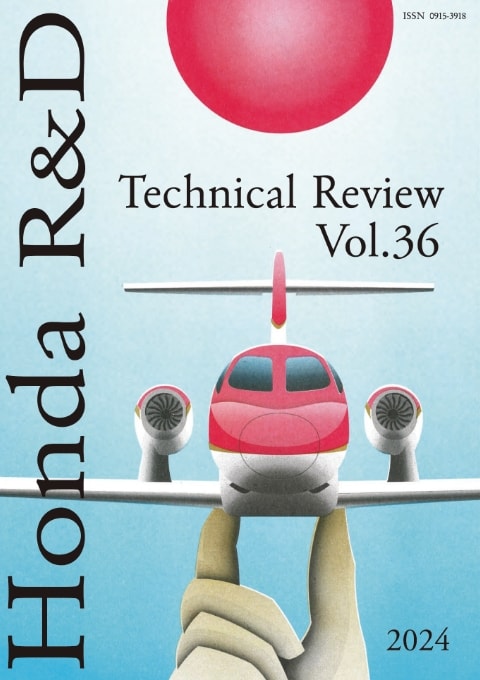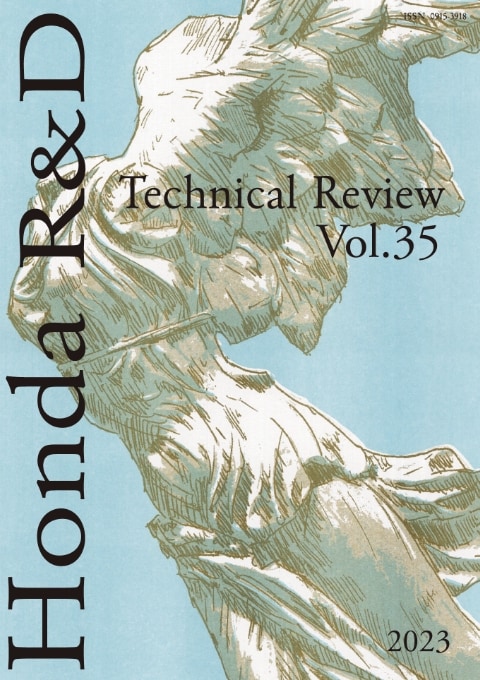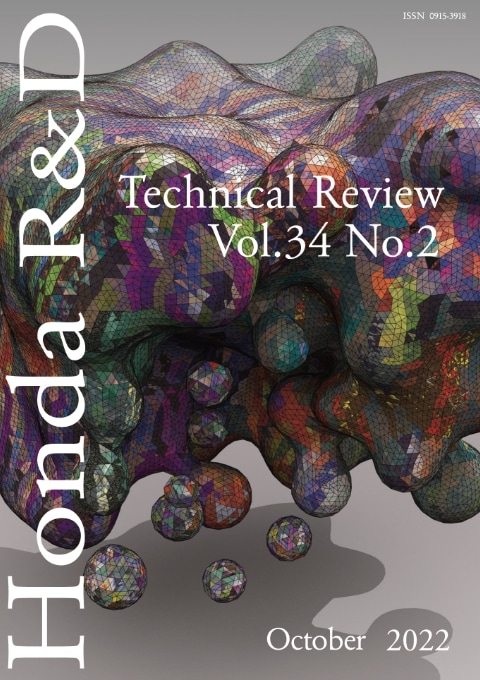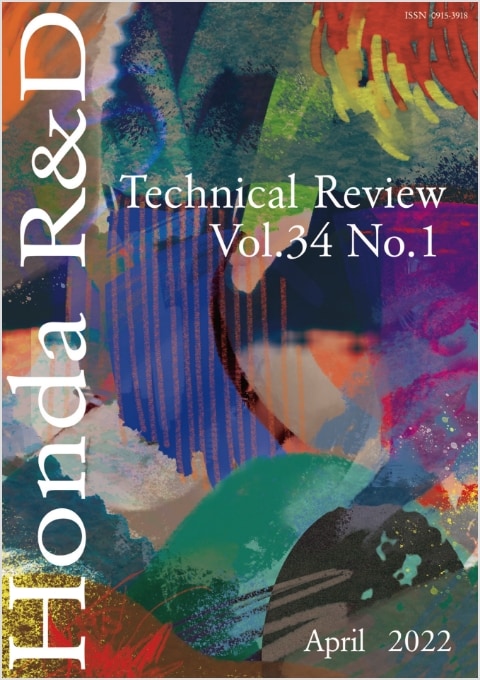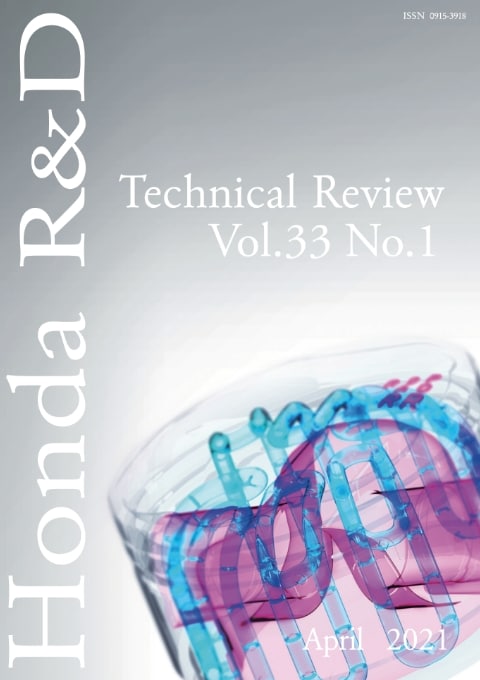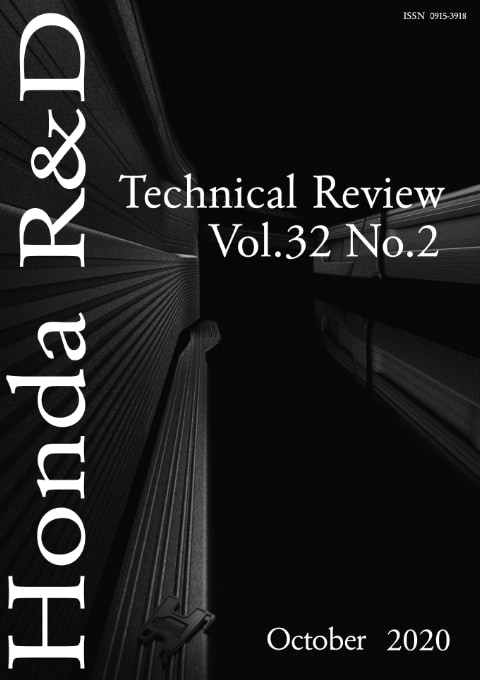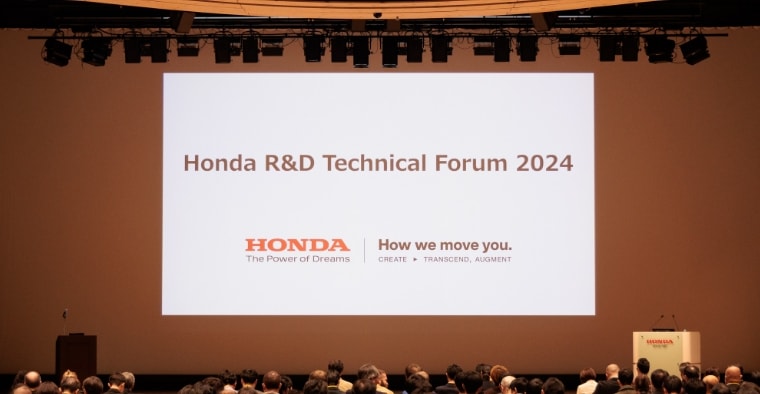Honda R&D Technical Review Vol.34 No.2
Honda R&D
Technical Review Vol.34 No.2
- Study of Technology for Outdoor Stable Culture of Microalgae for Recycling of CO2 in Atmosphere
- Summary
The optimization of culture tank structure and culturing conditions was investigated using Honda’s own strain of microalgae and a flat panel photobioreactor for the purpose of creating carbon dioxide fixation technology using microalgae capable of repurposing carbon dioxide in the atmosphere as a valuable resource. The aim is to build a carbon-neutral society. The culturing conditions were configured in terms of the concentrations of the nutrient salt components of nitrogen, potassium, and phosphorus. By adopting a flow guide shape that discharges liquid and gas in a single direction, a flow-field velocity of 0.02 m/sec or higher was achieved for the culture solution. This optimization of the culturing conditions successfully increased microalgae production volume. Regarding the culture tank structure, the heat insulating layer structure made it possible to maintain temperatures within the control range throughout the year. The culture tank was also installed at a 45° tilt, which successfully increased the amount of incident light in the culture tank. Outdoor culture tests incorporating these factors yielded an expectation of algae production volume of 13.5 g/m2/day. These results indicate the possibility that DREAMO will be able to achieve ethanol production volume per planted area that is equal to or better than bioethanol from sugarcane, which is a carbon-neutral fuel.
Shohei KINOSHITA、Nozomi FUKUSHIMA、Mizuho DOI、Minoru GOTO
Details of papers - Semi-physical Model that Predicts Internal State of Lithium-ion Batteries and Calculates Degradation Behavior with High Accuracy
- Summary
A degradation simulation model based on the mechanism of lithium-ion rechargeable battery performance expression was developed in order to predict the long-term durability of on-board lithium-ion rechargeable batteries with high accuracy. Up to now, guaranteeing the long-term durability of lithium-ion rechargeable batteries required correspondingly long-term testing and design values with a large margin in terms of prediction accuracy. In the developed model, the model portion that calculates the battery performance was made into a physical model using the physical quantities that influence the degradation mechanism as explanatory variables, and the degradation behavior of each factor was made into an empirical model that is trained from the test results. The model with this hybrid structure was proposed as a semi-physical model. As a result of this, accuracy in predicting durability was increased, and a capability to represent the non-linear behavior of performance degradation transition over long periods of time was indicated. When the internal state of that model is to be acquired by disassembly analysis, however, model training incurs a high development cost. For this investigation, therefore, the approach of determining the internal state by calculation from voltage and current data was chosen rather than that of disassembling lithium-ion rechargeable batteries to measure their internal state. This choice was also intended to increase the applicability of the approach by reducing the training cost. In this way, it becomes possible to reduce the size of the extra margin necessary in design as well as to enhance convenience.
Yuki TOMINAGA、Kaoru OMICHI、Tadashi KAGA、Yurika NISHIMOTO
Details of papers - Study of Heat Treatment Conditions that Impact Thermal Conductivity of Aluminum Casting Alloy
- Summary
An approach was studied that sets the heat treatment conditions to increase thermal conductivity after achieving the mechanical properties demanded of aluminum casting alloy parts. The heat treatment conditions that increase thermal conductivity were verified by focusing on the behavior of solute atoms that solid solute in the aluminum metal matrix and obstruct thermal conduction in AC4B, an aluminum casting alloy used as a material for cylinder heads. This study is applicable to heat treatment type aluminum alloy in general, and can also be expanded to aluminum alloy parts with high demand for heat dissipation properties. In addition, the close relationship between thermal conductivity and electrical conductivity indicated the potential for a simple alternative method of measuring thermal conductivity.
Junichi UEDA、Yuichi IENAGA、Kenji SUTO
Details of papers - Real-time Bolt Axial Force Fastening System Using Ultrasonic Waves in Mass Production Assembly Process
- Summary
In order to reduce variations in fastening force in mass production assembly processes, a real-time bolt axial force fastening system was developed to provide fastening force that is stable, whether the work is done by automated equipment or by humans. An ultrasonic wave method is used to measure axial force, with a gap between the bolt head and the probe for increased accuracy. Bolts used for measurement were bolts with specifications that allow for forming by existing manufacturing processes. The probe emits an ultrasonic beam that is propagated by means of a newly developed solid propagation medium and receives echoes separately from the head and bottom of the bolt. Operations on the two received echoes are carried out simultaneously so that measurements are stable even while fastening is underway, realizing real-time axial force measurement. As a result, measurement of axial force during fastening is realized without changing production takt time, bolt manufacturing costs, and other such existing conditions.
This technology is capable of bidirectional communication with nutrunners, the electric fastening equipment that has been widely adopted for mass production fastening processes. It can control fastening force to a preset axial force value, and it has successfully reduced axial force variations to one-tenth or less than what is experienced with existing torque methods of tightening.Kazuhiro TSUZAKI、Toshitsugu SAKAKIBARA、Yasushi HARA、Tsukasa ISHIDA
Details of papers - Proposal of Evaluation Metric for Machine Learning Model for Battery Voltage Estimation
- Summary
In order to evaluate a machine learning model that estimates the voltage of a lithium-ion battery, we built a new accuracy evaluation metric based on the Arrhenius law, and tested it to see if it could be used to judge the relative merits of machine learning models. Two types of machine learning model were selected. One was a type that performed discrete estimates in regions where data are not available, while the other was capable of performing continuous estimation. Then, discrete temperature data based on floating car data collected from electric vehicles were generated, and the models were trained and evaluated. The results confirmed that the commonly used evaluation metric for evaluating deviation from test data showed no clear differences in evaluation results between the two model types. On the other hand, the authors’ new evaluation metric based on the Arrhenius law showed clearer differences in the evaluations of the two models. Implementing this metric made it possible to evaluate a machine learning model even with limited collected data, thereby advancing the practical application of battery voltage estimation technology using machine learning models.
Takuma KAWAHARA、Yuki SATO、Koji SATO
Details of papers
- About Honda R&D
- Honda Philosophy
- Top Message
- Mission
- Organization
- Company Overview and Affiliates
- Members
- Award
- R&D Research Paper




